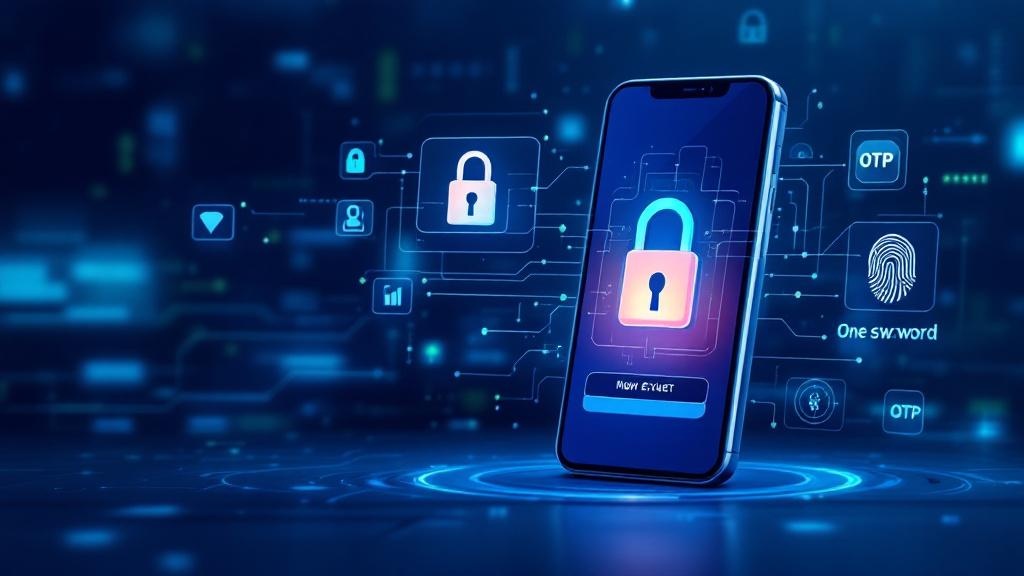In today’s digital age, where financial transactions are just a tap away, securing your digital wallet is more important than ever. Digital wallets store sensitive information, from bank account details to credit card information, making them prime targets for hackers. To safeguard your wallet and protect your funds, it’s crucial to implement the best security measures. One of the most effective and widely used methods is digital wallet two-factor authentication (2FA).
In this guide, we’ll walk you through the concept of two-factor authentication in digital wallets, how to set it up, and why it’s a must for securing your digital assets.
What is Digital Wallet Two-Factor Authentication?
Understanding Two-Factor Authentication (2FA)
Two-factor authentication (2FA) is a security measure that requires two forms of identification before granting access to an account. It adds an extra layer of protection by combining something you know (like a password) with something you have (like a code sent to your phone or generated by an app).
When you enable two-factor authentication for wallets, even if someone gains access to your password, they still won’t be able to access your wallet without the second verification step.
Why Should You Use Two-Factor Authentication for Your Digital Wallet?
The rise in digital wallet fraud prevention has led many wallet providers to adopt two-step verification in digital wallets. Here’s why you should enable 2FA on your wallet:
Enhanced Protection
Passwords alone aren’t enough anymore. With 2FA, an attacker would need access to your phone, email, or another authentication method, making it much harder to break in.Protection Against Phishing and Hacking
Cybercriminals often target wallets with phishing attacks to steal login credentials. 2FA can prevent these types of attacks, as it requires a second factor that the attacker likely won’t have.Preventing Unauthorized Transactions
Many digital wallet security features alert you when transactions occur. With 2FA, even if a hacker accesses your account, they can’t transfer funds without the second layer of authentication.Compliance with Security Standards
Many financial institutions and services now require multi-factor authentication for wallets to comply with privacy and security regulations. By setting up 2FA, you ensure your wallet is protected and compliant.
How to Set Up Two-Factor Authentication for Your Digital Wallet
Setting up multi-layer security for digital wallets is simpler than you might think. Below are the steps to set up two-factor authentication on your wallet, using digital wallet apps like Google Pay, Apple Pay, or cryptocurrency wallets.
Step 1: Enable 2FA in Wallet Settings
Most digital wallets offer the option to enable two-factor authentication under the settings or security section.
Log into your digital wallet account.
Navigate to Account Settings or Security Settings.
Look for the Two-Factor Authentication or 2FA option.
Follow the on-screen instructions to enable it.
Step 2: Choose Your 2FA Method
There are several methods you can use for two-factor authentication:
Authentication Apps: Apps like Google Authenticator or Authy generate a unique code every 30 seconds.
SMS/Email OTP: A One-Time Password (OTP) is sent via SMS or email.
Biometric Verification: Fingerprint or facial recognition as an extra authentication step.
Choose the one that fits your preferences and security needs. Biometric verification for wallets is a convenient and secure method that uses your fingerprint or face to authenticate access.
Step 3: Enter the Code and Confirm
Once you’ve selected your 2FA method, enter the code sent to your phone or generated by the authentication app. You might also need to confirm your email or phone number.
Step 4: Backup Your 2FA Details
Many wallets provide backup codes or recovery methods in case you lose access to your 2FA method. It’s a good practice to store these securely in case you need to recover your account later.
What Are the Best Two-Factor Authentication Apps for Digital Wallets?
There are several apps and methods you can use for 2FA in your digital wallet:
Google Authenticator
This is a widely used app that generates 6-digit codes every 30 seconds. It’s easy to use and supports multiple accounts.Authy
Authy is similar to Google Authenticator, but with added features like cloud backup and multi-device support.Microsoft Authenticator
Another solid option, with integration to Microsoft accounts and other services.SMS and Email OTP
Many wallets offer SMS or email as an authentication method. While convenient, it’s slightly less secure than app-based 2FA, as SIM swapping and phishing attacks can sometimes compromise these methods.
Common Types of Authentication Methods for Mobile Wallets
Mobile wallet authentication protocols vary based on the platform (iOS, Android) and wallet type (banking, cryptocurrency). Some common authentication methods include:
1. Biometric Verification
Many modern wallets offer biometric authentication, such as fingerprint scans or face recognition. This method is both quick and highly secure, as biometric features are unique to each individual.
2. PIN Codes and Passwords
A PIN code or password is the most basic form of wallet security. However, combining it with multi-factor authentication for wallets provides a more robust solution.
3. Token-Based Authentication
Token-based authentication for wallets is commonly used in cryptocurrency wallets. It involves generating a unique authentication token for every login attempt.
Best Practices for Digital Wallet Protection
While two-factor authentication is a great first step, there are additional digital wallet security measures you can take to enhance protection:
Keep Your 2FA Methods Updated
Regularly check that your digital wallet encryption is up to date and that your 2FA method is working.Use Strong, Unique Passwords
Avoid using simple or reused passwords. A password manager can help you generate and store secure passwords.Enable Alerts for Transactions
Many wallets allow you to set up alerts for when transactions occur. This can help you spot suspicious activity immediately.Don’t Share Your Security Codes
Be wary of phishing attempts and never share your 2FA codes or backup recovery codes with anyone.Use a Secure Network
Always use a secure Wi-Fi connection or a VPN when accessing your digital wallet to avoid data theft from unprotected networks.
FAQs About Digital Wallet Two-Factor Authentication
1. What is two-factor authentication (2FA) in digital wallets?
Two-factor authentication (2FA) is a security method that requires two pieces of information to access your digital wallet: something you know (your password) and something you have (like a code sent to your phone).
2. How does two-factor authentication protect digital wallets?
2FA adds an extra layer of security by requiring a second form of identification, making it harder for hackers to access your wallet even if they know your password.
3. What are the best two-factor authentication apps for digital wallets?
Some of the best 2FA apps for digital wallets include Google Authenticator, Authy, and Microsoft Authenticator. These apps generate time-sensitive codes that provide added security.
4. Can I use SMS for two-factor authentication in digital wallets?
Yes, many digital wallets offer SMS-based 2FA, though it is slightly less secure than using an authentication app due to potential vulnerabilities like SIM swapping.
5. Is biometric authentication secure for my digital wallet?
Yes, biometric verification for wallets (fingerprints, face recognition) is a secure and convenient way to authenticate access to your wallet, making it harder for unauthorized users to gain entry.
6. How can I recover my digital wallet if I lose access to 2FA?
Many wallets provide backup codes or alternate recovery methods in case you lose access to your 2FA. Always store these securely in case you need to regain access.
Conclusion
Digital wallet two-factor authentication is a crucial step in protecting your financial information and digital assets. By enabling 2FA, you’re adding a robust layer of security that will help safeguard your wallet against fraud and unauthorized access. Along with strong passwords, biometric verification, and backup recovery options, 2FA ensures that your digital wallet is as secure as possible.
Stay one step ahead of cybercriminals by enabling two-factor authentication today and protecting your digital wallet from potential threats.








Comments (0)